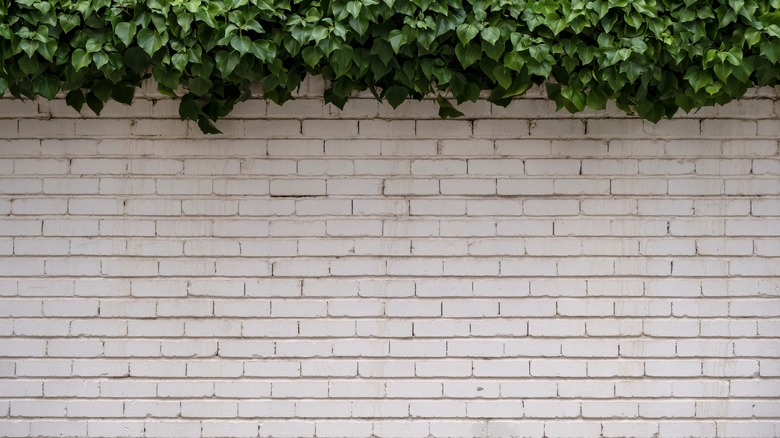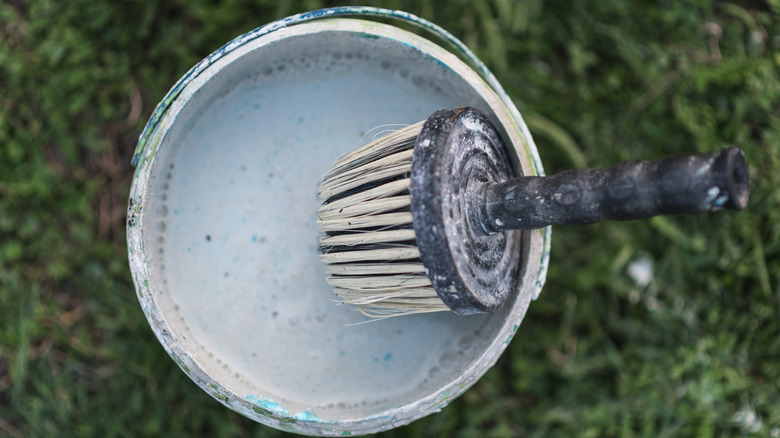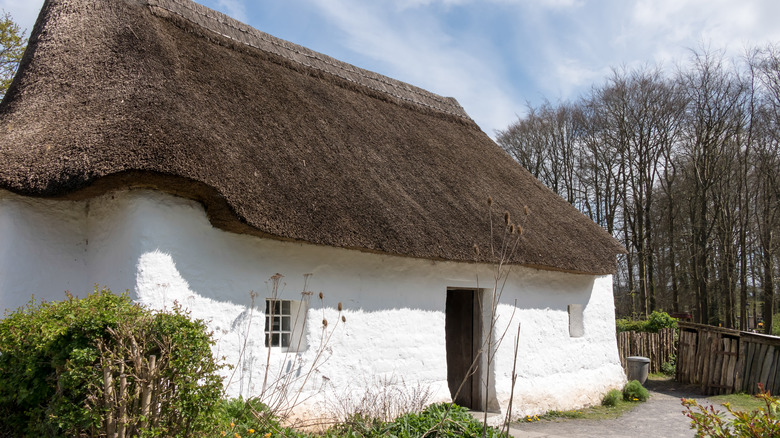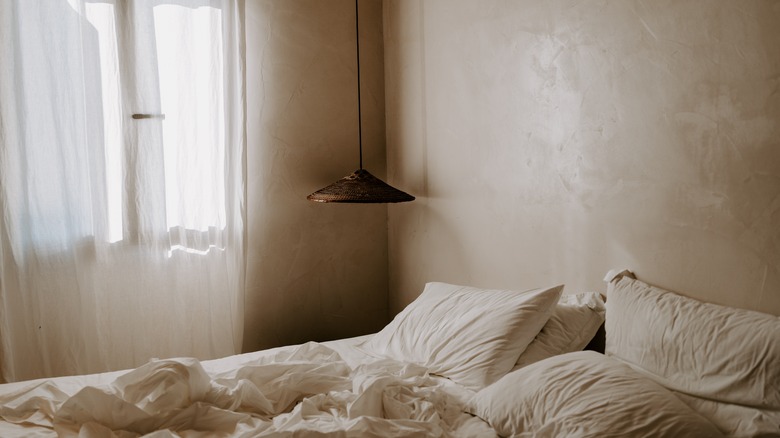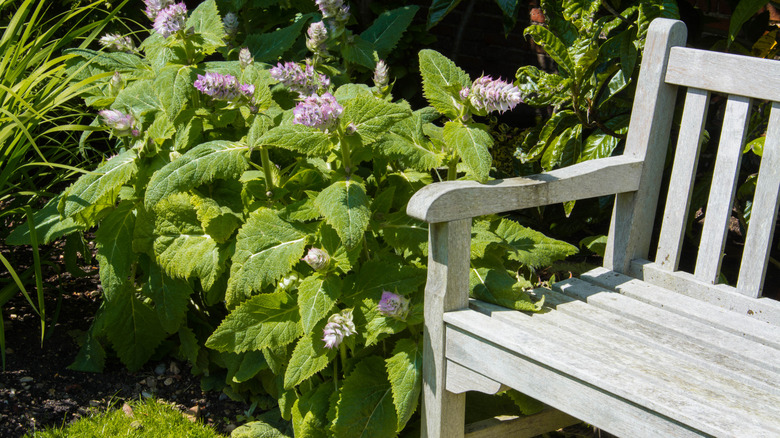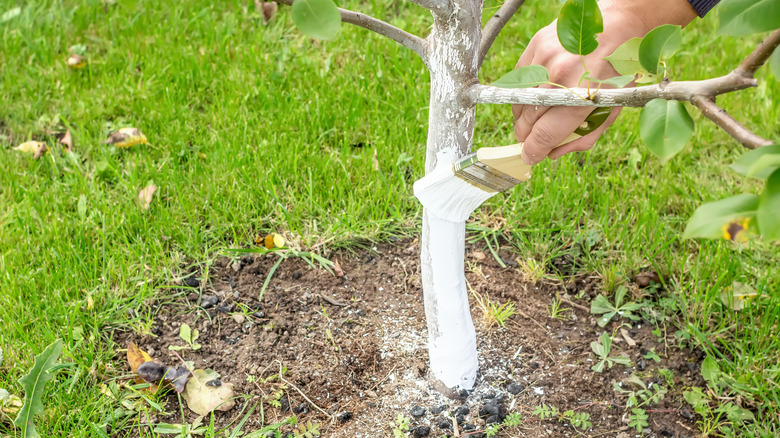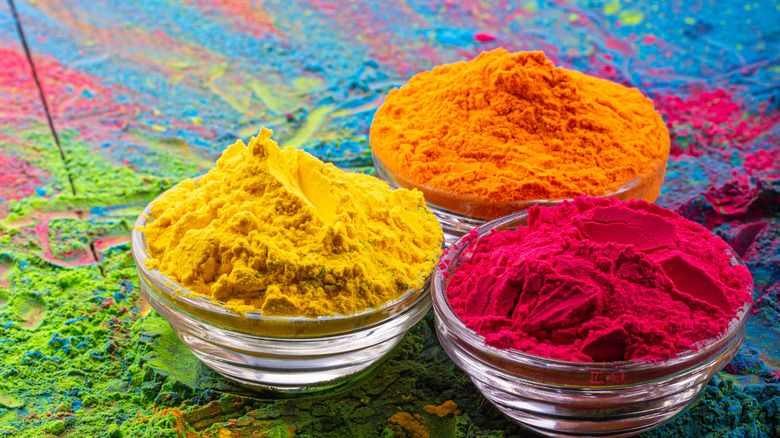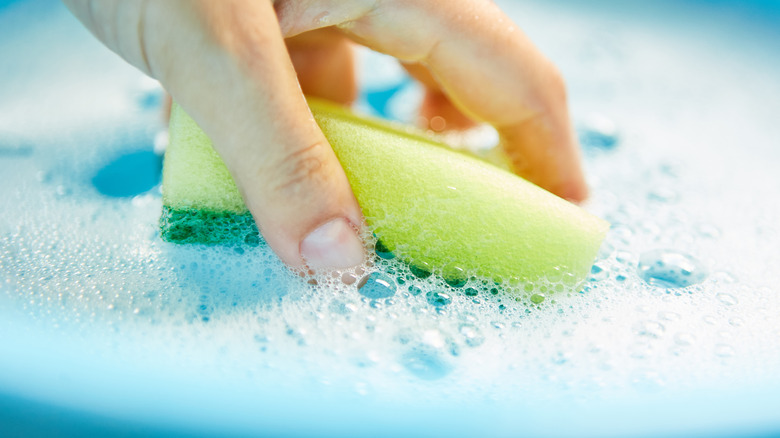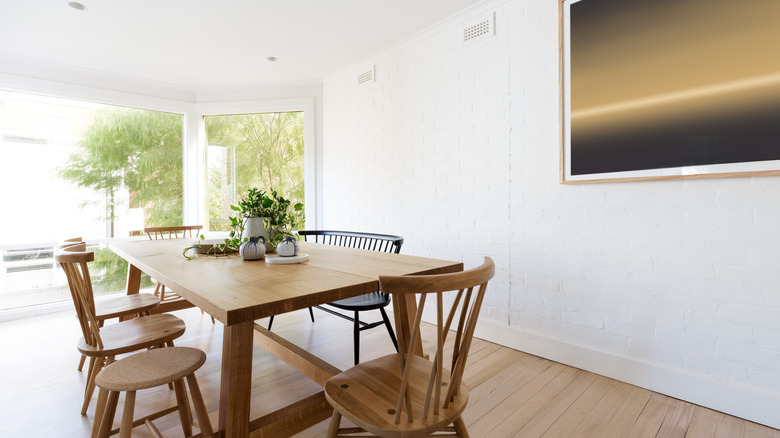Myths About Limewash That You Should Stop Believing
While limewash has been used for centuries as a traditional finish for surfaces like brick, wood, and stone, it is not as widely used today as other paint alternatives. This is because there is a lot of false information out there about it. These myths are pretty common — so common that you've probably been tricked by at least one of them!
In reality, limewash has many benefits as a natural and eco-friendly paint alternative. Yet it may not be as popular as other paints because people think it has limited color options, is difficult to apply, and isn't durable. Plenty of would-be limewash users also believe that limewash is expensive, opting to instead buy regular paint to save themselves the money and trouble. We are here today to dispel this and all the other rumors about limewash and introduce you to this affordable, easy, long-lasting, and colorful solution for your next painting project.
1. Limewash is just white paint
Limewash is so much more than just another white paint to choose from. While it is technically a type of paint in use, its composition varies greatly from the other liquid. It's made from all-natural materials, typically a mixture of hydrated lime, water, and pigment instead of chemicals. It has been used for centuries by different cultures worldwide as a great way to add color and character to a space, as it has a different texture and appearance than paint.
While you can't DIY white paint, it's possible to DIY limewash, making it very different. Just purchase a bag of hydrated lime at your local hardware store. Hydrated lime, also known as calcium hydroxide, is a chemical compound made from limestone or other calcium-containing minerals. It is produced by heating limestone in a kiln to create quicklime (calcium oxide), which is then mixed with water to create a slaked lime (calcium hydroxide) powder. Next, mix the hydrated lime with water in a non-reactive container (such as a plastic or wooden bucket) to create a thick paste. Allow the mixture to sit for several hours or overnight to "slake," or hydrate fully. From there, your limewash is ready to use.
2. Limewash is only for historical buildings
While limewash is often used on historical buildings, it can also be used on modern buildings to achieve a unique and natural look. Limewash is often associated with historical buildings because it's been commonly used on masonry surfaces such as brick, stone, and concrete since the Roman Empire. While many of us might associate it with homes on the Oregon Trail, it can be used in a variety of architectural styles, from traditional to modern.
In recent years, limewash has become increasingly popular as a natural and eco-friendly paint alternative, and is being used in a wide range of contexts, including residential and commercial interiors and exteriors. Limewash can create a unique, textured look and can be applied in a range of colors to suit any design style.
It's a very versatile material that can be used to create a range of effects, from a soft, subtle finish that blends in with its surroundings, to a bold and more vibrant look that is eye-catching and stands out. It can be applied to walls, floors, and furniture, and can be used to create a variety of textures, from smooth and uniform to rustic and distressed.
3. Limewash is only for exterior walls
Many people associate the classic limewash stain with the outdoors, but using it inside can create some amazing looks. Limewash can be used on interior walls to create any look you want, whether that's a unique, textured appearance or a soft, matte finish. For the best results when applying limewash to interior walls, it is important to properly prepare the surface to ensure good adhesion. The surface should be clean and free of any debris or dirt. If the wall has been previously painted, it may need to be stripped or sanded to create a more porous surface for the limewash to adhere to. This is a little bit more preparation than just repainting would require, but it's worth it to achieve the best results.
Limewash can be applied using a brush or a roller. Use a brush for a more rustic, handmade look, but a roller for fuller coverage. Most experts don't recommend the roller since it doesn't give that "lived-in" effect. When applying, remember that the first coat of limewash should be diluted with water to create a more translucent effect. All subsequent coats can be applied at full strength to create a more opaque finish.
4. Limewash is difficult to apply
Limewash is quite easy to apply and can be done with a brush, sprayer, or roller. Most people think it's difficult because it requires just a little more preparation than regular paint. Yet with just a few moments of planning ahead, you can be a limewash expert in no time. Before you apply the mixture, you must prepare the surface. The surface to be painted should be clean, dry, and free of any loose or flaking paint. If necessary, the surface may need to be sanded or repaired before applying the limewash. Next, create the mixture. Limewash is typically mixed with water in a ratio of 1:1 or 1:2, depending on the desired consistency. The mixture should be stirred thoroughly to ensure that the lime powder particles are evenly distributed, so you don't end up with a clumpy substance that will go on unevenly.
The first coat of limewash should be applied using a brush, roller, or sprayer, depending on the size of the surface. The coat should be thin and even, and any drips or excess should be smoothed out, just like with regular paint. Repeat with different coats until the desired look is achieved. Overall, the process of applying limewash can be relatively straightforward, but it may require some patience and practice to get it perfect. The key is to follow the manufacturer's instructions, take the time to prepare the surface properly, and apply the limewash evenly and consistently.
5. Limewash is not durable
Limewash is known for its durability. It's been a popular material in home building and design for thousands of years. Even the Romans used limewash! Yet it is important to understand that its longevity depends on a few different things, like the quality of the materials used, the application process, and the environmental conditions in which it is applied.
When applied with care, the limewash can last for many years. Many home designers gravitate towards it because it can be one of the most long-lasting types of paint. We must remember, however, that part of limewash's charm is how it looks when it ages. The substance itself is a thin coating designed to wear over time, gradually developing a texture known as patina, which is highly sought after in many design styles. However, if you don't like it, be aware that you might need to do more touch-ups and maintenance over the years than you are used to regular paint.
Overall, limewash can be a durable and long-lasting option, but its longevity will depend on proper application and maintenance. You want to be gentle when you clean it, using only mild soap and water to wash it. Ensure you don't scrub, and handle the wall gently.
6. Limewash cannot be used on surfaces other than masonry
Limewash is traditionally used on masonry surfaces. These would be things like brick, stone, and concrete. These materials have large pores, which can soak up the limewash and help it stick. For this reason, you can also use limewash on other porous materials, such as plaster and stucco, and even earthen materials like adobe, cob, or wood. However, using limewash on non-porous surfaces such as metal or plastic is not recommended, as it may not adhere properly. This inability to stick is likely where the myth comes from.
It's possible to experiment and see if it applies to other materials — you never know until you try! Some folks even apply it to the trees in their yards to keep out bugs. When applying limewash to secondary surfaces, like wood or stucco, remember it may require special preparation and application techniques. For example, you'll likely be okay when applying limewash to a brick wall with a sprayer but would need a paintbrush for the smaller corners of a wooden bench.
7. Limewash is not customizable
You might be avoiding using limewash in your home because you think you can't make it your own. But you definitely can customize limewash in several ways to suit your personalized design plan. For example, if you like the limewash look but prefer a different shade, add different pigments to the mixture to create the look you want. For the best results, use a powdered pigment in the color of your choice. Mix a small batch of the dyed limewash and do a small test on the wall or furniture. Things often look very different in the bowl versus on the wall dry, so be sure to leave it overnight before coming back to inspect. From there, you can adjust the proportions of your mixture to achieve your desired look.
Even if you like the classic limewash color, changing its texture can drastically impact the final product. You can adjust the texture of limewash by varying the amount of water used in the mixing process. A thinner mixture will produce a smoother finish, while a thicker mixture will create a more textured look. When you are ready to apply it, you can also change the amount of sheen it has. A high-gloss finish can be achieved by adding wax to the final coat, while a more matte finish can be achieved by skipping the wax.
8. Limewash is not eco-friendly
Limewash is a very eco-friendly option for painting for many reasons. The first is that limewash is made from natural ingredients such as hydrated lime, water, and sometimes pigments to give it a distinct color. These ingredients are safe to use around children and pets. In addition, there is a distinct lack of harmful chemicals or toxins that could harm the environment in limewash. It is also biodegradable, which means it breaks down naturally over time. This means that when it does begin to decompose, it does not harm the environment during the process.
Another way limewash is eco-friendly is that it has low volatile organic compound (VOC) emissions. VOCs are chemicals that evaporate into the air and contribute to air pollution. By choosing limewash over traditional paints, you can help reduce the number of VOCs released into the environment and reduce your overall environmental impact.
Limewash is also a great option if you want to consume less to be more eco-friendly. It has been used for centuries and is known for its longevity, lasting up to 20 years or more. This means it does not need to be replaced as often as traditional paints, which can reduce waste. Finally, limewash is a breathable substance that allows moisture to escape from the walls. This can help prevent mold growth and improve indoor air quality, making your immediate environment healthier.
9. Limewash cannot be washed or cleaned
You might be wary of using limewash in your home because you feel like you can't clean it. It's a pervasive myth that if you clean limewash, you'll end up wiping it right off. But that's not true, as limewash can be washed with a mild detergent and water and touched up as needed. Start by removing any loose dirt or debris from the surface using a soft-bristled brush or a vacuum cleaner with a soft brush attachment. Next, test the cleaning solution on a small, inconspicuous area to ensure it does not damage or discolor the surface. Once you have confirmed that what you are using won't cause any harm, you can move forward.
Dip a soft cloth or sponge into the soapy water and wring out the excess moisture. Gently scrub the limewashed surface, being careful not to use too much pressure. Using too much elbow grease might damage the surface, which is where we think the myth comes from. Gentle is the name of the game. If there are stubborn stains or areas of discoloration, you can try using a stronger cleaning solution. Mix equal parts white vinegar and water instead of soap. Allow the solution to sit for a few minutes before rinsing with clean water.
10. Limewash cannot be used in humid environments
Limewash can be used in a humid environment, but there are a few things to consider before settling on a choice. Limewash is a breathable material that allows moisture to escape, which makes it a good choice for areas with high humidity. However, it may be susceptible to mold growth or other moisture-related issues in places with excessive moisture, such as bathrooms or damp basements. Just like with any other wall covering, it is important to take a few precautions to ensure it performs well in a humid environment.
Firstly, it is important to have adequate ventilation in humid areas to prevent moisture buildup. This could be a built-in extractor fan or simply an open window. When purchasing the limewash, also take an extra moment to read the recommendations on the packaging. Some types of lime are more resistant to moisture than others, so it's important to choose carefully. Finally, if you live somewhere that's always humid outside or have a very humid space inside your home, regular maintenance can help prevent moisture buildup and ensure that the limewash remains in good condition over time. Things like cleaning the surface regularly and addressing any moisture issues promptly will save you a lot of hassle.
11. Limewash is expensive
Limewash can be more affordable than other paint options, especially at the onset. That said, comparing prices and reading reviews before purchasing is always a good idea to ensure you are getting the best value for your money. The overall cost of using limewash will depend on the size and complexity of your project, as well as the quality and brand of the limewash you choose. Different brands of limewash will sit at various price points, as will buying it from different home goods stores, like Home Depot or Lowe's. However, it generally costs between $25 to $100 per gallon, much like paint. If you want to save a lot of money, you can mix your own limewash from hydrated lime and water at home. This is a great option for those who love a good DIY.
In general, limewash is a relatively affordable option compared to other types of paint or finish. However, limewash sometimes requires more time and labor to apply compared to traditional paint, which may increase the project's overall cost. This could be things like cleaning and sanding the surface to be covered, preparing the mixture, and letting the multiple coats dry.
12. Limewash is only for a rustic look
Some designers will avoid the substance because they don't want their homes to look farmhouse chic. Yet those who think this way are shortchanging themselves of a great design opportunity. While limewash can be used to create a rustic look, it can also be used to achieve a modern or sophisticated look, depending on its application. By playing with its color and texture, designers can add an unexpected element to a room's feel.
When using limewash in a modern style, it is important to consider the overall design context and choose a color and texture that complements the other elements in the space. As mentioned, limewash can be paired with natural materials such as wood and stone to create a harmonious, organic feel. Even in hyper-modern spaces, a touch of limewash can create a nice contrast to sleek surfaces like concrete, metal, and glass without overwhelming the room. Instead, its presence can add a touch of warmth and depth to the overall design. For example, in a post-modern home, a limewashed picture frame or coffee table base is subtle enough to go unnoticed by the untrained eye. They won't jump out at you, but work well in the background to influence the atmosphere of the space.
